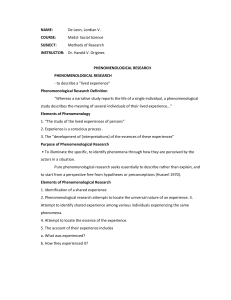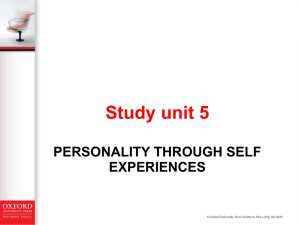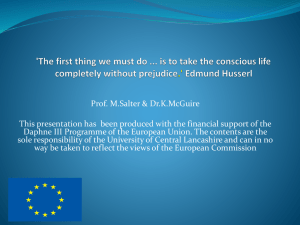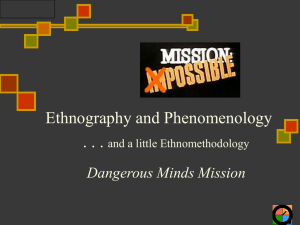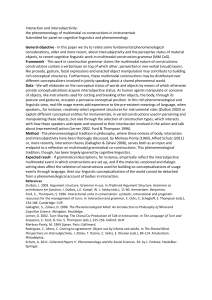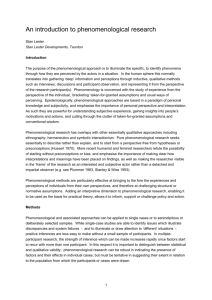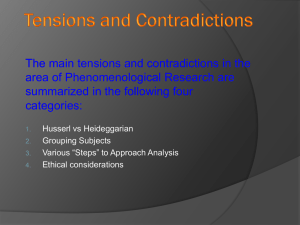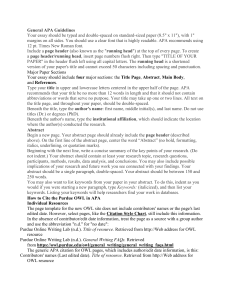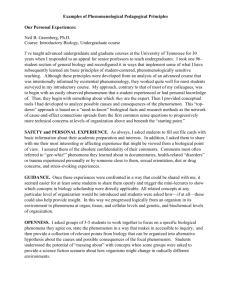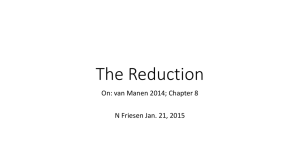What is Art Therapy?
advertisement
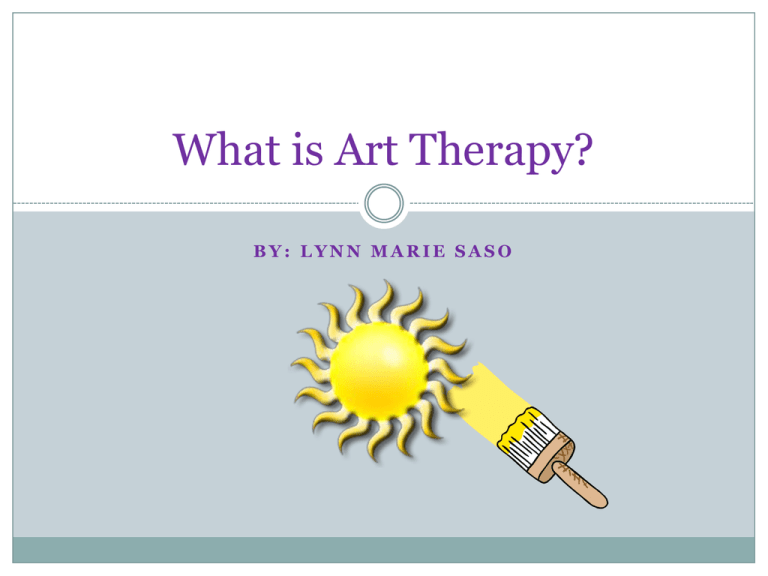
What is Art Therapy? BY: LYNN MARIE SASO Contemporary Art Therapy: The Connection Between Art, Healing, and Public Health Stucky and Nobel (2010) conducted research on the relationship between art-based interventions improving health status mentally and physically. Research on the literature of creative expressions, for the field of art therapy, has been able to point out the need for creativity to promote healing. According to Stucky and Nobel (2010) the advantages, benefits, and effectiveness of art therapy focus on the many health benefits of art therapy. For example, music engagement, visual arts therapy, movement based therapy, and creative writing therapy have all been supported to promote a more positive wellbeing. Using arts in the healing process does not contradict the medical view, it complements it. It is important to conduct future research on creating congruence between the biomedical view and a person’s creative, artistic process (Stuck & Nobel, 2010). Art Therapy Pioneer: Mala Betensky Judith Rubin has commented that Mala Betensky has made a significant influence in the field of art therapy. She has given creative tools to use in a clinical and research setting. She has introduced to the field of art therapy elements of symbolic expression in art, line, shapes and color and how they can be viewed form a phenomenological perspective. Betensky has her Ph.D. and ATR, formally acting as an professor and currently having a private practice. Betensky is continuing to contribute to research and literature in art therapy (as cited in Betensky, 1995). Mala Betensky’s Clinical Example & What is Art Therapy? In a clinical setting Mala used the phenomenological art therapy approach and her client was able to invoke deep emotions and memories. Within this case the client drew a small figure walking under a large triangular shape. The client was able to have a realization of her need for separateness from her father’s anger and rigidness. This contributed to her undermining her own self worth. By using Betensky’s approach, deep realizations can occur through art therapy (Bentensky, 1995). Mala Betensky sees the advantages of art therapy most profoundly displayed by the art work of the children of the Terezin Concentration Camp. These children were under what could be the ultimate stress. They painted, drew, and cut out their most inner feelings. With each picture the child’s inner emotions are depicted by the structures of their art expressions. Betensky states that no matter the limit in materials or the amount of stress, a person’s able to exhibit self- expression and creativity. Art therapy is the means to achieving these inner most emotions that may other wise never had a chance to come out. By using a phenomenological approach one is able to see this expression without the use of dialogue by using the art of seeing, visualizing, and the concept of structure and its dynamics (Bentensky, 1995). Phenomenological Art Therapy Phenomenology is the study of things objects and their structures by how they appear in ones instantaneous experience. Betensky sees the phenomenological theory as a focus on visually expressive self projections with art materials for people that need to find themselves. Therefore, art therapy is uniquely the perfect way to incorporate philosophy and method (Bentensky, 1995). The method of Phenomenological art therapy is best described by example… 1st Stage: Pre- Art Play with Materials 2nd stage: The process of Art Work (creating a phenomenon) * Picking the most comforting material 3rd Stage: Phenomenological Intuiting (Symbolic Expression of Shape) * Taking a step back to experience the art work 4th Stage: What Do You See? *showing what you found in yourself through your art work What is Art Therapy? I believe art therapy is the mixture of self-expression through art with the use of process, content and product of creativity. By using Mala Betensky’s phenomenological approach art therapy can open up a person’s positive self-worth with the use of art materials. Research has shown that art therapy can be the answer of creating a more well-rounded form of healing, integrating the overall wellness of a person’s process. Ultimately, I believe art therapy of today and of the pioneers in the past give a voice to those that may not have one. Resources Southern California Art Therapy Association (SoCalATA) http://www.socalata.org/at/ Art Therapy: Journal of the American Art Therapy Association, AATA 1202 Allanson Road Mundelein, IL 60060 (847) 949-6064 www.arttherapy.org Email: info@arttherapy.org Free Arts for Abused Children http://www.freearts.org/ References Betensky, M. (1995). What do you see? Phenomenology of Therapeutic Art Expression. London: Jessica Kingsley Publishers Ltd. Stuckey, H., & Nobel, J. (2010). The connection between art, healing, and public health: a review of current literature. American Journal of Public Health, 100(2), 254-263.
